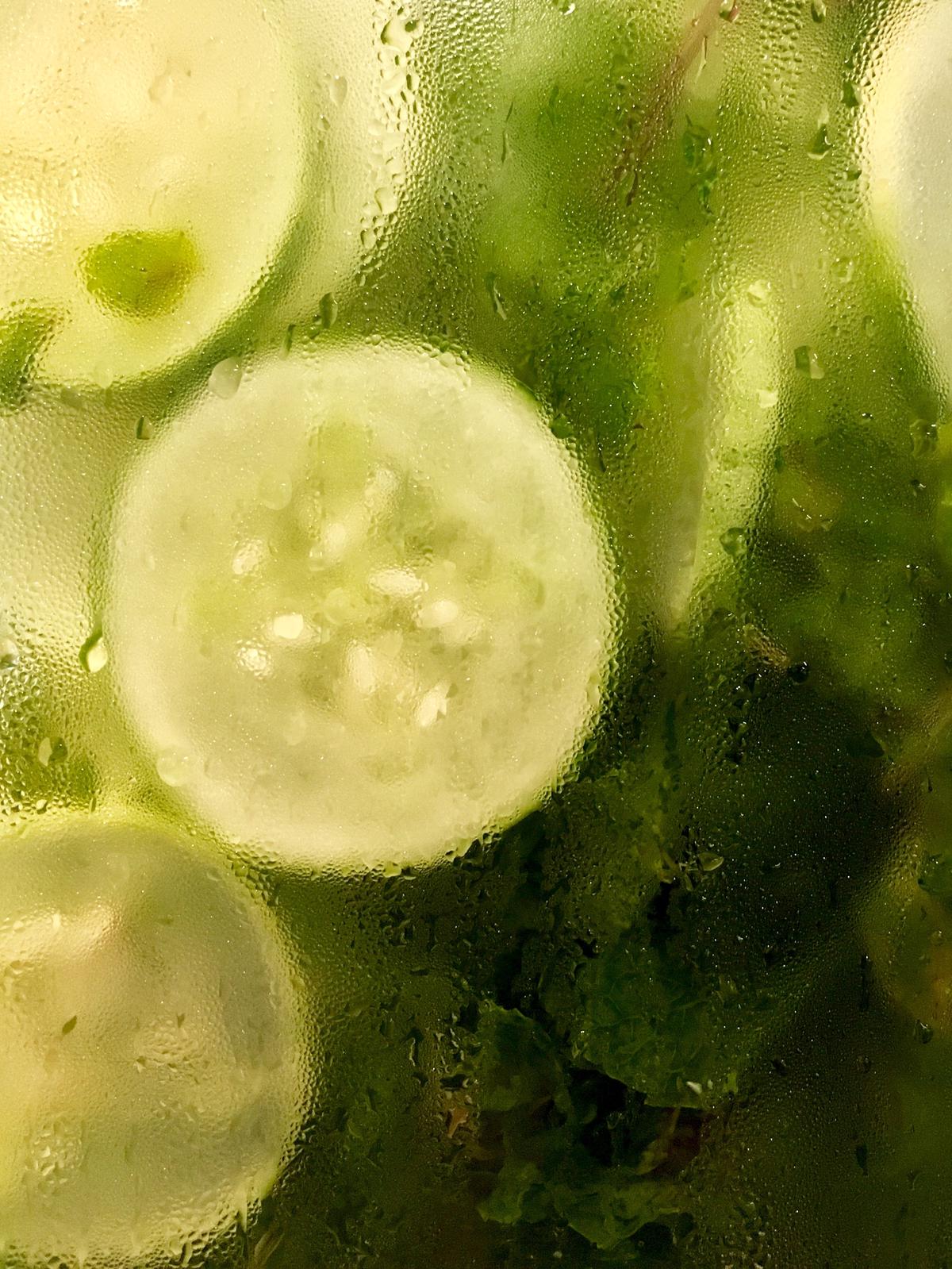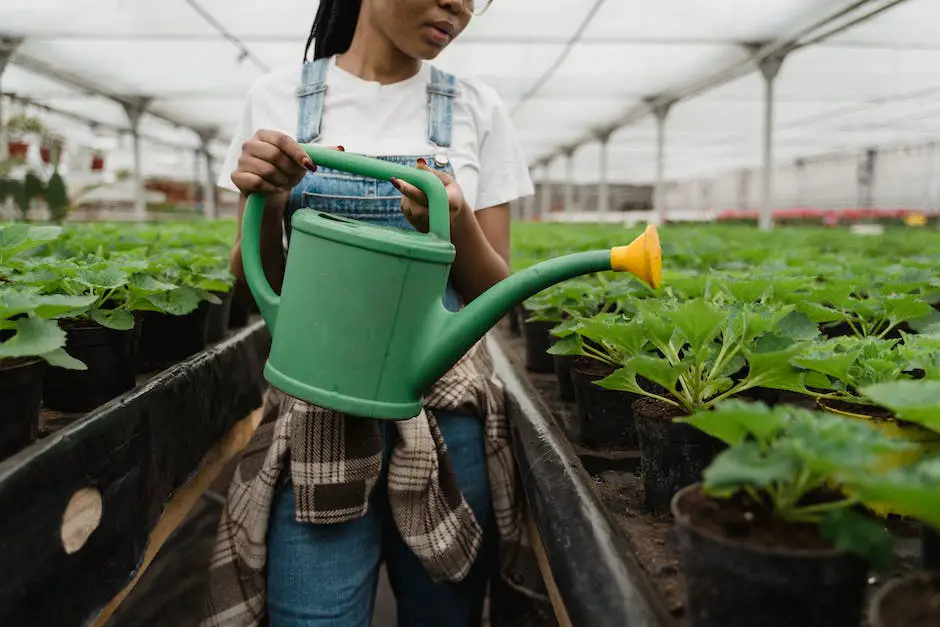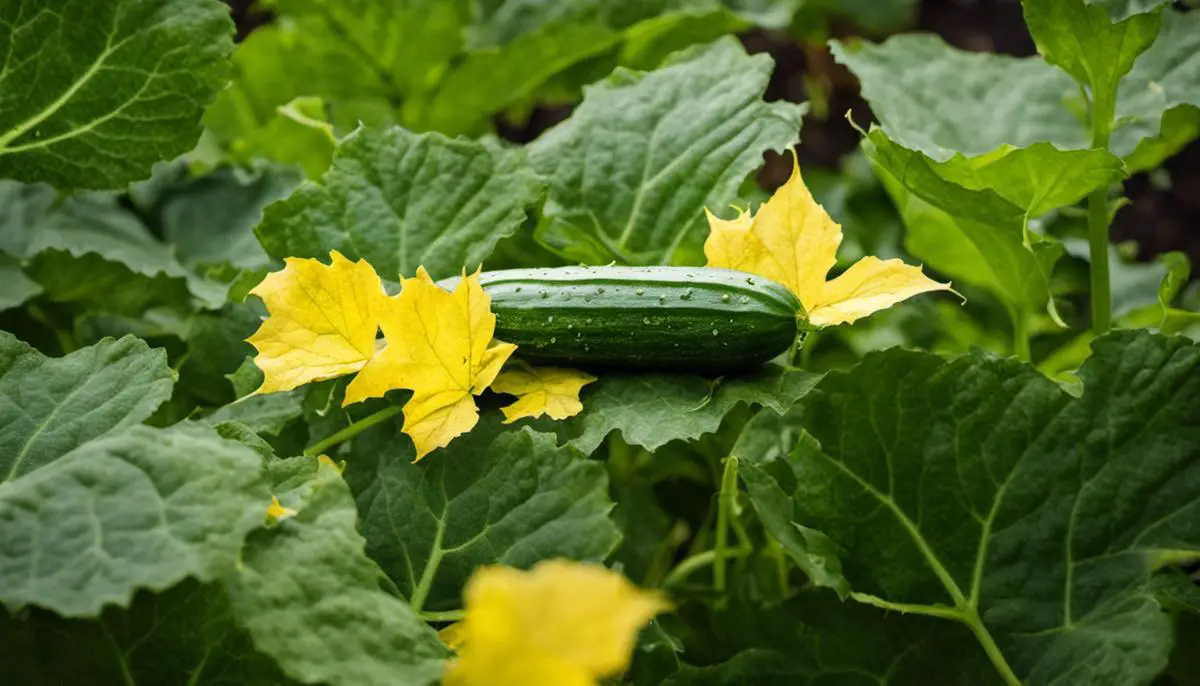Healthy, vibrant cucumber plants are a joy to behold and promise a bountiful harvest. Nonetheless, occasionally they might present us with perplexing issues such as yellow leaves, indicating a possible health issue that needs to be addressed. To tackle these issues effectively, it’s crucial to gain an understanding of plant nutrition, disease identification, and the right watering techniques. By detailing the essential nutrients cucumbers require, identifying common diseases that present symptoms of yellowing, and discussing correct watering methods, this material offers an enlightening guide to preserving the health and vitality of your cucumber plants.
Understanding Plant Nutrition
Understanding Essential Nutrients for Cucumber Plants
Cucumber plants, like other plants, require a varied range of nutrients for proper growth and production. The most essential of these nutrients include nitrogen, phosphorus, and potassium, often represented as N-P-K on fertilizer labels. Nitrogen aids in foliage growth, phosphorus supports root development and fruiting, and potassium is crucial for overall plant health and disease resistance.
Reader Poll: What online courses would interest you?
Beyond these macronutrients, cucumbers also require several micronutrients in lesser quantities, such as calcium, magnesium, and sulfur, all of which contribute to the structural and metabolic function of the plant. Additionally, trace elements like iron, manganese, zinc, copper, molybdenum, and boron, although needed in much smaller amounts, are equally important for maintaining a healthy plant.
Deficiencies Leading to Yellowing of Cucumbers
Yellowing cucumbers could generally indicate deficiencies in these crucial nutrients. For instance, nitrogen deficiency can cause the older leaves to turn yellow or have a general yellowing across the plant. A lack of magnesium or sulfur could cause the leaves to yellow from the outside inwards.
Similarly, deficiencies in trace elements can result in yellowing leaves. Iron deficiency, for example, manifests as yellowing between the leaf veins, creating a marbling effect. Moreover, a lack of potassium can lead to yellowing leaf tips and edges.
Subscribe to our newsletter!
It’s important to remember that yellowing could also be indicative of other problems, such as overwatering, pest infestation, or diseases, and not just nutrient deficiencies.
The Importance of Soil Type in Nutrient Availability
The type of soil in which cucumbers grow plays a vital role in determining the availability of these essential nutrients. Sandy soils, for example, have quick water drainage, which might wash away nutrients, potentially leading to deficiencies. In contrast, clayey soil retains water, which can drown plant roots, preventing proper nutrient absorption.
Loamy soil, a well-draining mixture of sand, silt, and clay, is generally considered ideal for cucumber plant health. This type of soil retains just the right amount of water, without becoming waterlogged, and easily delivers nutrients to plant roots.
Moreover, the soil’s pH level can influence nutrient availability. Cucumbers prefer a slightly acidic to neutral soil, around pH 6.0-7.0. At this level, all essential nutrients are available for plants to absorb.
To maintain these conditions, regular soil testing is essential. It allows you to track nutrient levels and adjust as necessary using organic or chemical fertilizers, providing your cucumbers with ideal growing conditions.

Photo by ananth22by7 on Unsplash
Plant Disease Identification
Bacterial Wilt in Cucumbers
One common disease that causes cucumber plants to turn yellow is bacterial wilt. This disease is spread by insects like the cucumber beetle and it affects the plant’s vessel system. With this disease, the entire plant wilts and turns yellow rather quickly, often within a few days. Leaves first appear to be greasy, then they wilt and finally turn yellow or brown. If your cucumber plants are showing these symptoms, bacterial wilt could be the culprit. Cutting stems diagonally and squeezing them, to observe any sticky, milky sap oozing out, is a confirming diagnosis.
Cucumber Mosaic Virus
Another disease possibility is the cucumber mosaic virus, which not only turns the leaves of the cucumber plant yellow, but also creates a mosaic-like pattern on them. Additionally, the leaves may appear wrinkled or curled and the growth of the plant can be stunted. This virus is typically spread by aphids. To verify, check for a unique symptom of this virus: “shoestring” appearance of the leaves. They become narrowed or strap-like. Infected fruits exhibit a mottled or distorted appearance.
Fusarium Wilt in Cucumbers
Fusarium wilt is a soil-borne disease that can cause the leaves of cucumbers to turn yellow, and causes wilting and death of the plants. It is caused by the fungus Fusarium oxysporum. Symptoms include wilting during the heat of the day, yellowing of the lower leaves and stunting of the plant. To confirm the presence of this disease, cut open the stem of affected plants. Infected plants usually show a discoloration in the vascular tissues.
How to Diagnose these Diseases
Diagnosing plant diseases requires careful observation of symptom patterns. If your cucumber plant has turned yellow suddenly, bacterial wilt may be the cause. Cut the cucumber’s stem and check for any milky sap for diagnosis. If the leaves are yellow and display a mosaic-like pattern, consider the cucumber mosaic virus as the possible source. However, if your plant is turning yellow, wilting gradually, and also showing vascular discoloration when the stem is cut open, fusarium wilt could be the problem. In all cases, getting laboratory confirmation through a local extension service will give the most reliable result.
Consulting a local gardening expert or extension service can help you distinguish between these diseases if you are unsure. Remember, each disease has its own treatment and control methods, so accurate identification is crucial for effective management.

Watering Techniques
Understanding the Importance of Proper Watering Techniques
Poor watering techniques are a common cause for yellowing cucumber plants. Cucumbers are composed of about 95% water, making hydration an essential aspect of their health. Correct watering techniques are crucial for the plant’s overall health and productivity. Too much water or not enough can result in a stressed plant, leading to yellowing leaves.
Identifying Signs of Improper Watering
It’s essential to know the signs of improper watering to identify whether this issue is causing your cucumber plants to turn yellow. Signs of overwatering include wilted, yellowing leaves, and root rot, which you can discern by looking at the plant’s root if possible. If the plant appears to be wilted and the soil around it appears dry or hard, your cucumber plant may be underwatered.
Adjusting Your Watering Schedule
To correct the issue of yellowing cucumber plants due to improper watering, you will need to adjust your watering schedule. The correct amount of watering depends on several factors, including the size of your plant, the temperature and humidity of your location, the type of soil you use, and the plant’s stage in its growth cycle.
Cucumber plants generally need at least one inch of water per week. In drier or hotter climates, they may need more frequent watering, sometimes even daily.
Water the cucumber plant early in the morning to minimize evaporation and ensure that the plant has enough water to survive the day’s heat. Watering at the root level, rather than sprinkling water over the leaves, will help prevent fungal diseases that can cause yellowing leaves.
In conclusion, paying attention to watering techniques and adjusting your watering schedule based upon various factors is crucial to prevent your cucumber plants from turning yellow. Remember, consistency is key for successful plant care.

Implementation of solutions
Understanding the Causes of Yellowing Cucumbers
Even the most carefully tended cucumber plants can cause discouragement when the fruit begins to turn yellow. This could be due to a few common issues including overripe fruit, inadequate fertilization, too much or too little water, or plant diseases.
The Importance of Controlled Watering
When it comes to watering, too much or too little can both lead to yellowing cucumbers. Plants should be watered thoroughly, but also be allowed enough time to dry out between watering sessions to avoid waterlogged roots and potential root rot.
The Role of Adequate Nutrition
Providing appropriate nutrients to cucumber plants through feeding is another important aspect of preventing fruit yellowing. If cucumbers don’t have enough nutrients, they can become yellow. Check the pH of your soil to ensure it’s not too acidic or too alkaline, both conditions can inhibit nutrient absorption by the plant. A pH between 5.5 and 7.0 is ideal for cucumbers. Use a balanced fertilizer to ensure they get the necessary nutrients.
Identifying Diseases and Pest Infestations
Diseases and pests can also be a cause of yellowing cucumber plants. Look out for common cucumber diseases such as powdery mildew and bacterial wilt. If you think a disease might be causing the yellowing, remove and destroy the affected plants to prevent the spread and consider treating the remaining plants with a disease treatment or pesticide.
Choosing the Right Garden Setup
Finally, the setup of your garden could also be contributing to yellowing cucumbers. Ensure your plants have plenty of room to climb and sunlight to grow. Overcrowded plants can lead to reduced air circulation, which can cause a strain on the plant and result in yellow fruits. Place your plants in a location where they can receive at least 6 to 8 hours of full sunlight each day.
The Role of Regular Inspection
To successfully keep cucumbers healthy and green, consistent observation is key. Regularly inspect the plants, pay attention to changes, and adjust watering, feeding, and garden setups accordingly. With consistent care and attention, you can overcome yellowing cucumber issues and enjoy a rewarding harvest.

Armed with the crucial knowledge about plant nutrition, watering techniques, and disease identification, you are now better equipped to address and prevent the yellowing of cucumber plants. By implementing the suggested solutions, adjusting your watering and feeding schedules, effectively treating any prevalent diseases, and adapting your garden setup if necessary, you can foster an environment where your cucumbers can thrive. Remember, successful gardening is a journey. It’s through understanding these aspects and adjusting accordingly that you can ensure your cucumber plants remain green, healthy, and productive, guaranteeing plentiful and satisfying harvests for many seasons to come.

